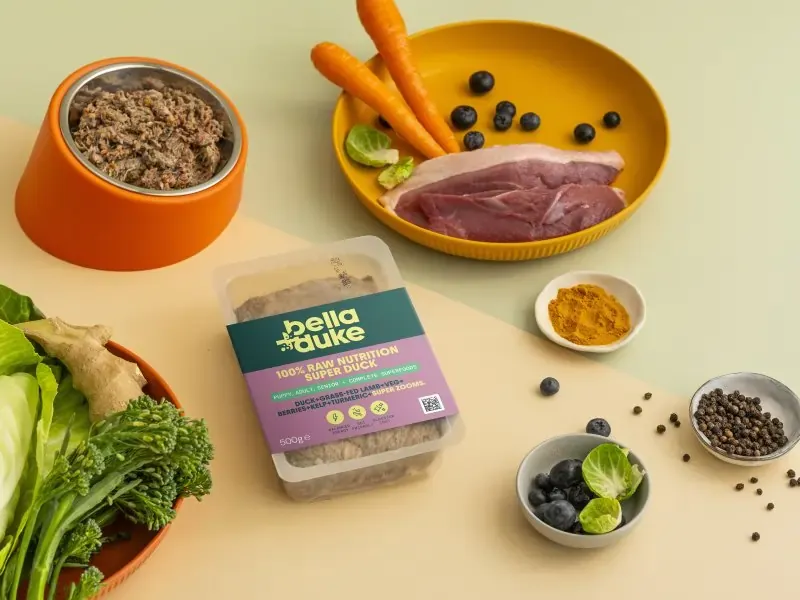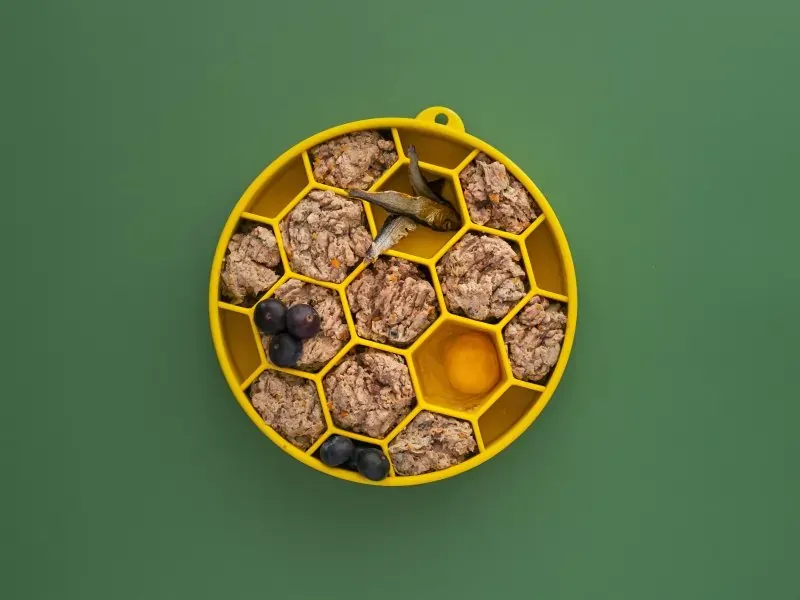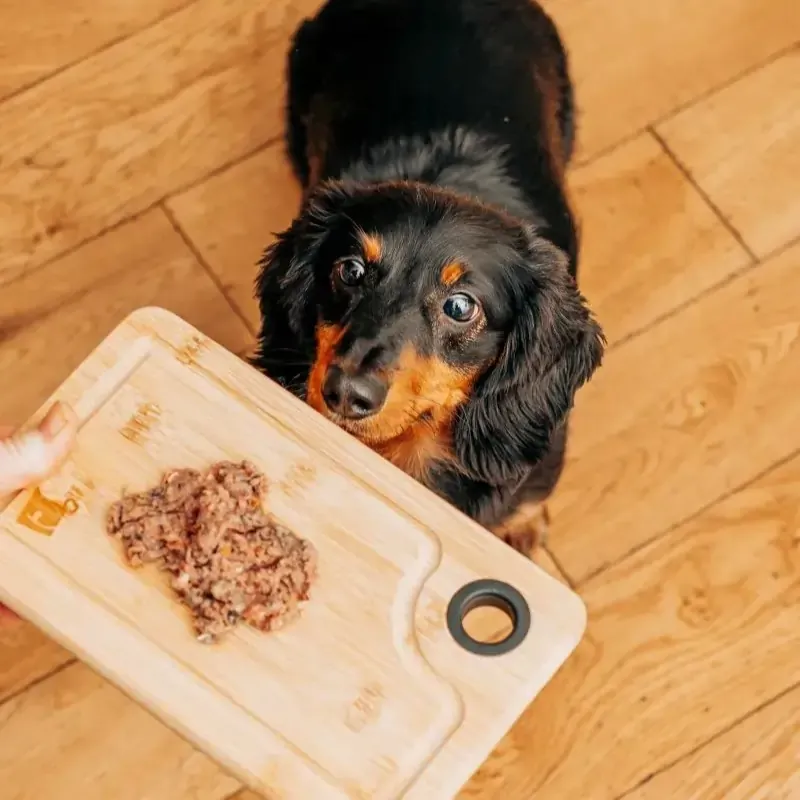Pancreatitis, an inflammation of the pancreas, is a common yet serious condition in dogs that requires careful management, particularly when it comes to diet. When your beloved canine companion is diagnosed with this painful ailment, understanding how to properly nourish them becomes a paramount concern for every dog owner. A bland diet, often featuring chicken and rice, is frequently recommended by veterinarians as a foundational step in managing acute flare-ups and supporting recovery. This article delves into why Chicken And Rice For Dog With Pancreatitis is a widely used dietary approach, how to prepare it safely, and the broader dietary considerations for long-term health. It’s equally important to know what dog food not to feed your dog to prevent worsening the condition.
Understanding Pancreatitis in Dogs
Pancreatitis occurs when the pancreas, a vital organ responsible for producing digestive enzymes and hormones like insulin, becomes inflamed. This inflammation can be acute, presenting with a sudden onset of severe symptoms, or chronic, characterized by recurring episodes or ongoing low-grade inflammation. Chronic pancreatitis can often develop as a result of damage incurred during an acute episode.
The exact cause of pancreatitis isn’t always clear, and it often involves a combination of factors. Certain dog breeds, such as Cavalier King Charles Spaniels, West Highland White Terriers, Yorkshire Terriers, Rough-Coated Collies, and Miniature Schnauzers, show a higher predisposition to the condition. Additionally, overweight dogs are more susceptible, potentially due to associated lifestyle factors. Inflammation in other abdominal organs, perhaps from blunt trauma or dietary intolerances, can also trigger pancreatic inflammation.
Recognizing the symptoms is critical for early intervention. Dogs suffering from pancreatitis often exhibit:
- Abdominal pain: They may struggle to get comfortable, be restless, or react sensitively to touch around their belly. Some dogs adopt a distinctive “prayer position” (front legs down, rear end elevated) in an attempt to alleviate discomfort.
- Changes in appetite: Pain and gut upset typically lead to a reduced interest in food, which can be one of the first noticeable signs.
- Nausea/Vomiting: Many dogs will feel sick, drool excessively, and may vomit.
- Changes to bowel habits: Diarrhoea is common, often producing larger, greasy, lighter-colored stools with a particularly foul odor, indicating improper digestion.
- Weight loss: If chronic pancreatitis affects appetite and digestion over time, weight loss will occur.
- Dehydration: Fluid loss from drooling, vomiting, and diarrhoea can lead to rapid dehydration.
If you observe any of these signs, a prompt visit to your veterinarian is essential. Pancreatitis is typically diagnosed through a combination of physical examination, observation of abdominal pain, and blood tests, sometimes supplemented by an ultrasound scan to visualize the pancreas.
The Role of Diet in Managing Canine Pancreatitis
Dietary management is undeniably one of the most crucial aspects of treating and preventing flare-ups of pancreatitis in dogs. The primary goal of a therapeutic diet for pancreatitis is to reduce the workload on the pancreas, thereby minimizing inflammation and allowing the organ to heal. This involves focusing on specific nutritional principles.
Key dietary principles for dogs with pancreatitis include feeding a diet that is low in fat and highly digestible. Fat, in particular, stimulates the pancreas to produce digestive enzymes, and an inflamed pancreas struggles to process it, which can exacerbate the condition. Therefore, a low-fat diet helps to “rest” the pancreas. Highly digestible ingredients ensure that nutrients are absorbed efficiently without putting undue stress on the digestive system.
Many veterinarians will recommend specific “prescription” or “therapeutic” diets formulated for pancreatic conditions. These diets are meticulously balanced to provide all necessary nutrients while keeping fat levels exceptionally low. However, in the initial stages of recovery or for managing acute episodes, a bland, home-cooked diet like chicken and rice is often the go-to recommendation due to its simplicity and gentleness on the digestive system.
Why Chicken and Rice for Dogs with Pancreatitis?
The combination of plain, cooked chicken and white rice is a time-honored recommendation for dogs with various gastrointestinal upsets, and it is particularly beneficial for those suffering from pancreatitis. This duo offers a highly digestible, low-fat, and nutritionally supportive meal that can help ease the digestive burden on an inflamed pancreas.
Benefits of Boiled Chicken
Boiled chicken, specifically boneless, skinless chicken breast, is an excellent source of lean protein. Protein is essential for tissue repair and overall bodily functions. When prepared correctly, without any added fats or seasonings, chicken provides this crucial nutrient without contributing to the fat content that can trigger pancreatic distress. Its simple structure makes it easy for a compromised digestive system to break down and absorb.
Benefits of White Rice
White rice, typically long-grain or short-grain, serves as a simple and easily digestible carbohydrate source. Unlike complex carbohydrates or high-fiber foods, white rice is gentle on the stomach and provides readily available energy. It helps to bind stools, which can be beneficial for dogs experiencing diarrhea associated with pancreatitis. The low fiber content also means less work for the digestive system, further reducing the strain on the pancreas.
Together, chicken and rice form a bland, palatable meal that provides essential calories and nutrients without over-stimulating the pancreas. It helps stabilize the dog’s digestive system, often reducing nausea and vomiting, and can encourage a reluctant eater to consume food during recovery. Understanding what dog food not to feed dogs is crucial when dealing with a sensitive digestive system.
Preparing Chicken and Rice Safely for Your Dog
Proper preparation is paramount when feeding chicken and rice to a dog with pancreatitis to ensure it is both safe and effective. The goal is to make it as bland and easily digestible as possible.
Chicken Preparation
Start with boneless, skinless chicken breast. This cut is naturally lean and reduces the fat content significantly.
- Boil: Place the chicken breast in a pot of water. Bring it to a boil and then reduce the heat to a simmer until the chicken is thoroughly cooked through. It should be white all the way to the center.
- Shred or Dice: Once cooked and cooled slightly, remove the chicken from the water. Shred it into small, manageable pieces or dice it finely. Small pieces are easier to digest.
- No Additives: Absolutely no seasonings, salt, pepper, garlic, onion powder, oils, or butter should be used during cooking or added afterward. These can irritate a sensitive digestive system or be toxic to dogs.
Rice Preparation
Use plain white rice, such as long-grain or short-grain white rice. Brown rice is higher in fiber and fat and generally not recommended for dogs with pancreatitis.
- Cook Plain: Cook the white rice with water according to package instructions, ensuring no butter, salt, oil, or other additives are used.
- Mushy Consistency (Optional but Recommended): Some veterinarians suggest cooking the rice with extra water to a mushier consistency. This can make it even easier for a sensitive stomach to digest.
Ratio and Portion Control
While general guidelines suggest a ratio of one part cooked chicken to two parts cooked white rice by volume, it is crucial to consult your veterinarian for specific recommendations. Your vet will advise on the precise ratio and portion sizes tailored to your dog’s individual weight, the severity of their pancreatitis, and their recovery stage.
It is always better to offer small, frequent meals throughout the day rather than one or two large ones. This approach reduces the load on the pancreas at any given time, aiding digestion and minimizing discomfort.
Transitioning Your Dog to a Pancreatitis Diet
Transitioning your dog onto, and eventually off of, a chicken and rice diet requires careful consideration and should always be done under veterinary guidance.
When starting the chicken and rice diet, especially after a period of fasting (which may be recommended by your vet during an acute flare-up), introduce it very gradually. Begin with tiny amounts, perhaps a spoonful, and observe your dog for any adverse reactions like vomiting or increased discomfort. If tolerated, slowly increase the quantity over several meals or days.
It is equally important to transition your dog off chicken and rice gradually. This bland diet is often a temporary measure for acute recovery. For long-term management, your veterinarian will likely recommend a specialized, commercially available low-fat diet that is nutritionally complete and balanced. The transition process should involve slowly mixing increasing proportions of the new prescribed diet with decreasing amounts of chicken and rice over a period of 5-7 days or longer, depending on your dog’s tolerance. Sudden dietary changes can upset a sensitive stomach and potentially trigger another pancreatitis flare-up.
Beyond Chicken and Rice: Long-Term Dietary Considerations
While chicken and rice serves as an excellent short-term recovery diet for dogs with pancreatitis, it is not nutritionally complete for long-term feeding. Managing pancreatitis in the long run requires a sustained commitment to a specialized diet and lifestyle adjustments.
For ongoing management, veterinarians often recommend therapeutic, low-fat dog foods specifically designed for pancreatic health. These diets are carefully formulated to provide all essential nutrients while minimizing fat content and ensuring high digestibility. There are various options available, including both kibble and raw diet formulations. Some raw diets, like those mentioned in the original article, can contain live, active enzymes that may aid digestion and reduce pancreatic stress. They often feature lower-fat proteins such as chicken, turkey, and white fish, which are highly digestible.
Maintaining a healthy weight is also paramount. Overweight dogs are more prone to pancreatitis flare-ups. Regular exercise and strict portion control are essential to keep your dog in optimal body condition.
Furthermore, it is critical to avoid high-fat table scraps and treats, which are common culprits for triggering pancreatitis attacks. Foods like cheese, butter, pork, and fatty meat trimmings should be strictly off-limits. Opt for low-fat, natural treats or pieces of boiled chicken or plain vegetables (if approved by your vet) as alternatives. When choosing commercial diets, discussions around grain free dog food heart disease highlight the importance of consulting your vet for a balanced choice that suits your dog’s specific health needs, including pancreatitis.
 Bella+Duke raw dog food Super Duck recipe with fresh duck, vegetables, and superfoods, ideal for sensitive stomachs.Always monitor your dog’s response to any new food and work closely with your veterinarian to adjust their diet as needed. Regular check-ups are vital to monitor their pancreatic health and ensure their diet supports their recovery and long-term well-being.
Bella+Duke raw dog food Super Duck recipe with fresh duck, vegetables, and superfoods, ideal for sensitive stomachs.Always monitor your dog’s response to any new food and work closely with your veterinarian to adjust their diet as needed. Regular check-ups are vital to monitor their pancreatic health and ensure their diet supports their recovery and long-term well-being.
 Bella+Duke raw dog food served in a yellow slow feeder bowl, aiding digestion for dogs with pancreatitis.Preventive measures also include sticking to lower-carbohydrate, easily digestible dog foods and avoiding sudden changes in their diet. Ensuring your dog is fit and healthy and managing any other existing medical conditions can also significantly reduce the chances of pancreatitis developing or recurring.
Bella+Duke raw dog food served in a yellow slow feeder bowl, aiding digestion for dogs with pancreatitis.Preventive measures also include sticking to lower-carbohydrate, easily digestible dog foods and avoiding sudden changes in their diet. Ensuring your dog is fit and healthy and managing any other existing medical conditions can also significantly reduce the chances of pancreatitis developing or recurring.
 Dog enjoying Bella+Duke raw dog food on a wooden board, showcasing a healthy, digestible meal option.
Dog enjoying Bella+Duke raw dog food on a wooden board, showcasing a healthy, digestible meal option.
When to Consult Your Veterinarian
While a chicken and rice diet can be an effective part of managing pancreatitis, it is never a substitute for professional veterinary care. This dietary approach should always be initiated and supervised by your veterinarian. Pancreatitis can be a life-threatening condition, and self-diagnosis or self-treatment can lead to severe complications, including sudden death.
You should contact your vet immediately if you notice any of the aforementioned symptoms of pancreatitis or if your dog’s condition appears to be worsening. Signs of worsening pancreatitis can include severe dehydration, increased lethargy, more intense pain (often leading to collapse and shock in acute, severe cases), or a complete refusal to eat. Your vet will conduct necessary tests for an accurate diagnosis and develop a comprehensive treatment plan that may include hospitalization, fluid therapy, pain relief, and anti-inflammatory medications, alongside dietary recommendations. Regular follow-up appointments are crucial to monitor your dog’s progress and make any necessary adjustments to their treatment or diet.
Conclusion
Managing pancreatitis in dogs is a complex process that relies heavily on careful dietary intervention. For many dogs experiencing acute flare-ups or during the initial recovery phase, a bland diet of boiled chicken and rice for dog with pancreatitis offers a gentle, digestible, and low-fat option that helps to soothe the digestive system and reduce the workload on an inflamed pancreas. However, this approach is typically a short-term solution and must be integrated into a broader, vet-supervised care plan.
The journey to recovery and long-term management involves understanding the disease, adhering to strict dietary guidelines, maintaining a healthy weight, and avoiding common triggers like high-fat treats. Above all, the cornerstone of effective pancreatitis management is the consistent guidance of your veterinarian. Always consult your veterinarian for personalized dietary advice and explore other comprehensive guides on managing your dog’s health on Dog Care Story.
References
- Lazarov, Lazarin. “Acute pancreatitis in dogs-age, breed and sex predisposition.” (2020): 10-14.
- Cridge, H., Lim, S. Y., Algül, H., & Steiner, J. M. (2022). New insights into the etiology, risk factors, and pathogenesis of pancreatitis in dogs: Potential impacts on clinical practice. Journal of Veterinary Internal Medicine, 36(3), 847-864. https://doi.org/10.1111/jvim.16437
- Lem, K. Y., Fosgate, G. T., Norby, B., & Steiner, J. M. (2008). Associations between dietary factors and pancreatitis in dogs. Journal of the American Veterinary Medical Association, 233(9), 1425-1431. Retrieved Jun 26, 2025, from https://doi.org/10.2460/javma.233.9.1425
